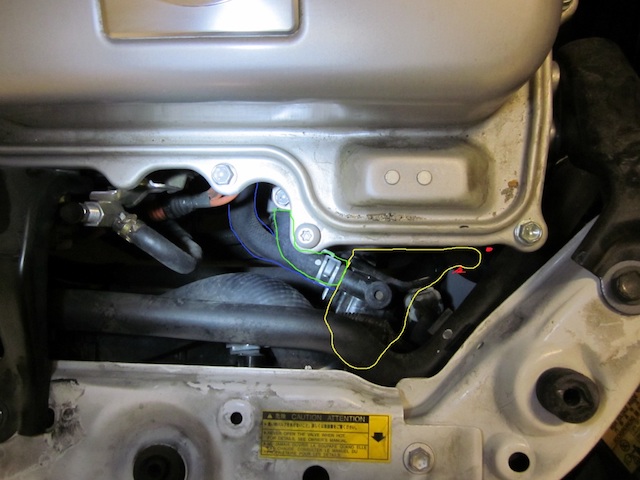Like many car components, water valve sensors can eventually fail over time. In this article, we'll explore what a water valve sensor is, how it works, the common signs of failure, and how to diagnose and fix the issue. Whether you're a Prius owner or just curious about car maintenance, understanding this part can help you avoid costly repairs down the road. Image credit: Stomper88 In vehicles like the Toyota Prius, the water valve plays a crucial role in the cooling system by regulating the flow of coolant to the engine, heater core, and coolant reservoir. Also known as a coolant flow control valve, it has separate passages for each component and works in conjunction with the Engine Control Module (ECM) to open and close these passages based on engine conditions. Inside the water valve is a small but essential component: the water valve sensor. This electronic device communicates with the ECM to monitor the position of the valve. It acts as a communication link between the ECM and the valve, ensuring that everything operates smoothly. If the sensor fails, the entire cooling system could be affected, leading to potential overheating and other serious issues. One of the most common causes of water valve sensor failure in the Prius is a faulty radiator. When the radiator isn’t functioning correctly, the engine can overheat, which puts extra stress on the sensor and may lead to a shorted circuit. Some 2004–2009 Prius models are particularly prone to this issue, often resulting in a stuck water valve. A sticking water valve can disrupt the normal flow of coolant, potentially causing serious problems such as engine overheating or coolant leaks. That’s why it’s important to recognize the early warning signs of a failing water valve sensor and take action before things get worse. The most obvious sign is the “Check Engine†light, but this can indicate a wide range of issues. Here are more specific symptoms that point to a problem with your water valve sensor: If you’re experiencing any of these symptoms, especially in combination, it’s worth investigating the water valve sensor as a possible cause. If you suspect a failing water valve sensor, the first step is to use an OBDII scanner to read the diagnostic trouble codes. One key code to look out for is P1121, which indicates that the water valve is stuck or that there's a short or corrosion in the sensor circuit. Once you’ve confirmed the issue, the only reliable solution is to replace the water valve. You can either purchase an OEM replacement part (such as part number 16670-21010 for the Prius) and install it yourself, or have a professional mechanic do the job at a local Toyota dealership. If you're handy with tools and want to save money, there are many online tutorials available that walk you through the process. These guides often include detailed steps and tips for replacing the water valve on a Prius, making it a manageable DIY project for experienced car owners.
Concrete machinery products are mainly used in road construction, railway construction, real estate construction, power infrastructure construction, rail transit infrastructure construction and other fields, and its product performance must meet the needs of these industries. The impact of downstream industries on the concrete machinery industry is mainly in terms of market demand and market competition. The development of the concrete machinery industry depends on the pull of the downstream industries, but also restricts the development of these industries.
Concrete pump; Concrete pump truck; Concrete mixer; Concrete mixing building; Conveyor pump Shandong Nuoman Engineering Machinery Co., Ltd , https://www.chinanuoman.comWhat Is A Water Valve Sensor?

Prius Water Valve Sensor Failure
The Most Common Symptoms Of A Failing Water Valve Sensor
How To Diagnose A Failing Water Valve Sensor